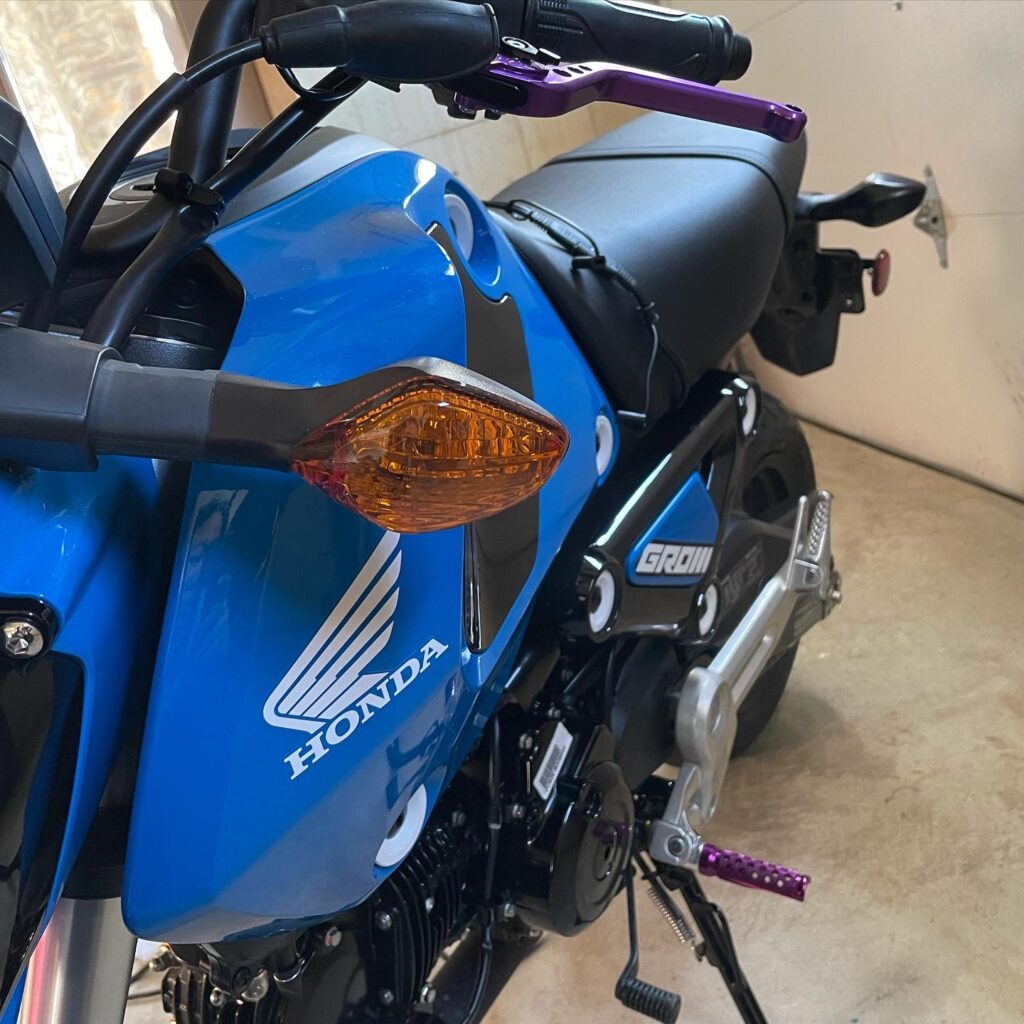
A few months ago, I pondered with you the stories we tell ourselves about who we are, and how it turns out so many of them aren’t or don’t have to be true after all. Identifying them is one thing, but changing them is another thing entirely. Nevertheless, it can be important – even vital – to do so. We might be able to get by on peanut butter and jelly sandwiches and breakfast cereal forever if we don’t learn how to cook, but what if we believe as truly that we can’t fight? That we can’t survive if an attacker gets their hands on us? That we can’t leave unhappy or abusive relationships and live on our own? Maybe it’s worth revisiting some of those stories that can trap us into those positions, whether we see an immediate need for change or to prepare us for a future when a story we tell ourselves won’t serve us any longer. Fortunately, whether it’s changing those big stories that shadow everything about who we are or those little ones that just keep us from a pleasure we might otherwise enjoy, the process of shifting them is similar, so we can practice these steps on the little ones.
One starting point may be to think about where the story came from. Is there a particular experience, a particular person that drilled it into your head? Once you’ve identified the source, you can start examining whether they are still an influence you want to accept over you. With the benefit of hindsight, you might realize that you have allowed some past happening that truly doesn’t matter to you anymore continue to affect how you live and act, and be able to decide that you don’t want to allow that any longer. Or you might realize that there is some deeper trauma that needs to be faced, dealt with, processed. This step can require therapeutic intervention, and that’s okay. You might also be able to move through the following steps without stopping at this one. That’s okay too, though you might want to consider coming back to it at some point to put a nail in that story’s coffin.
Another starting point is to find a motivation to change. It can be a small goal or a large one. For example, I have this story I tell myself about how I’m very not mechanically-inclined. I’m inept when it comes to using tools. However, I’d bent the brake lever on my Grom already (I’m told these things happen to new riders all the time) and I wanted adjustable ones with a shorter reach for my little hands anyway, not to mention I’d found that I could get them in my signature purple. Replacement was not only necessary, but desirable both for utility and aesthetics. If I wanted the job done, though, I’d either have to bribe friends and wait for them to be free, pay a shop, or do it myself. It’s not that I didn’t want to spend the money, though it seemed a little silly for something I was told was a relatively simple thing, but I didn’t want to wait once I got the parts. Not wanting to wait, wanting something exactly how you want it, whatever the reason, finding one can be enough to bump you over the edge of fear.
Then once you decide you’re going to take that leap, take a few baby steps on your way to the ledge. I’m not required to jump full-bore into wrenching on my bikes to kill the story that I can’t do mechanical things, let alone on motorized vehicles. I can start, as I did, with new levers, new foot pegs – changes that require minimal steps and have many how-to resources available. Now that I’ve done them, I have the confidence to perhaps do similar to my bigger, more expensive Bobber, or to make just slightly more involved changes on my little Grom. Similarly, you can go to a beginner’s shooting class one evening, maybe holster up an unloaded pistol and wear it around the house before you start traveling to multi-day fighting pistol classes or diving fully into a concealed carry lifestyle. Everything doesn’t have to happen all at once and you may decide that a certain step is far enough, or far enough for now.
A way to find baby steps is to figure out what things you can try that have the least consequences if you make mistakes, because they’ll happen and that’s okay. It’s true that almost all of the parts of a motorcycle are necessary to be able to operate it safely, but the parts I chose to change didn’t require digging deep into sensitive systems and it’s obvious when they are installed right or wrong because they can be easily tested. I also chose to work on my Grom first because it’s widely considered a simpler bike and not for nothing, it wouldn’t cost me as much in bribery, hassle, or shop fees if I needed to bring in someone more knowledgeable to fix my work. Fortunately, the mistakes I ran into were easily fixable and you can hardly even see them. You might yourself try a solo weekend away in a nearby city or your own apartment a few miles from your family or friends before embarking on a three-month backpacking trip in a foreign country or picking up and moving across the country. If the former go wrong, you have a much more available safety net of going home or getting help from people you know if it turns out you can’t work through the problems yourself.
Then as you take bigger and bigger steps, and try to fly into the new story you’ve authored for yourself, remember that imperfection is still a cause for celebration. The new you need not be flawless, need not be exactly the end image you envisioned. Deciding to change a part of your identity and following through with it is hard work. It can take many attempts, and you may fail over and over again. You may succeed partially before you succeed fully. You may never quite get there, just get further away from where you’re coming from and closer to where you’re going. Every effort you take to throw away those stories you tell yourself that you no longer accept, every time you are able to tell your new story to yourself, is meaningful and worthwhile. Rather than discount not making that shift entirely yet, enjoy thinking you don’t like a story anymore, deciding to change it, poking your toe into your new story, taking a step, taking that step again, and the place you’ve gotten to so far.




